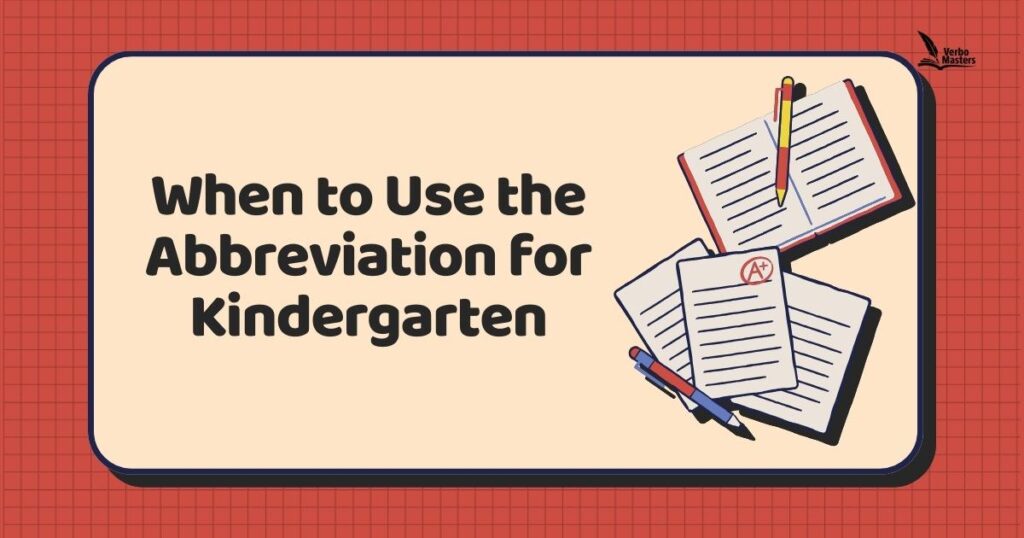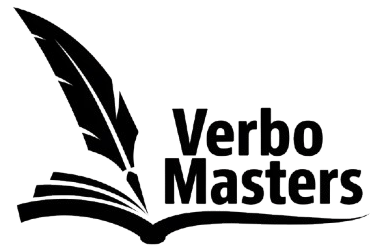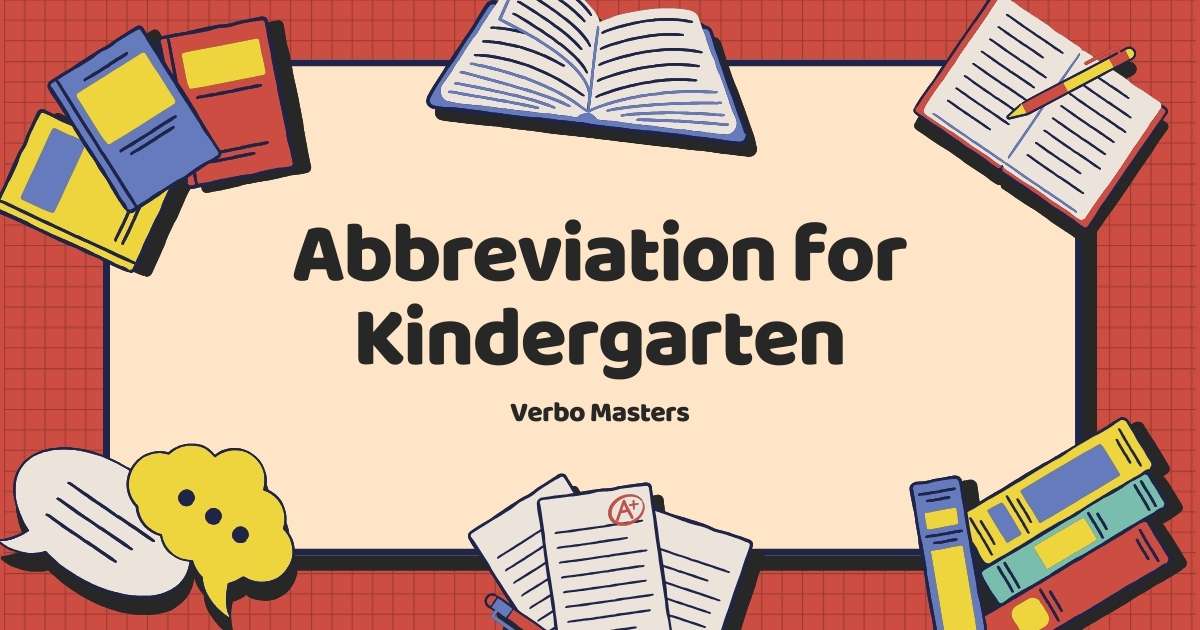The abbreviation for kindergarten is commonly written as K or Kg in schools and educational materials. It refers to the introductory year of formal education for young children, typically around ages 4 to 6. In systems like K–12, the K marks the starting point of a child’s academic journey, emphasizing its importance in early childhood development.
Kindergarten provides a foundation for basic academic skills such as reading, writing, and math. It also focuses on developing social, emotional, and motor skills through structured play, group activities, and creative learning. This early stage of education prepares children for the more formal environment of primary school while fostering curiosity and confidence in a fun and supportive setting.
What is the Abbreviation for Kindergarten?
Kindergarten is frequently abbreviated in writing to keep communication clear and concise, especially in educational settings or documents with limited space. The most common abbreviations are K and Kg, both widely recognized in school systems and by parents and educators alike.
These abbreviations are often seen in grade-level references like K–5 or K–12, as well as on report cards, classroom signs, and enrollment forms. Using shortened forms helps streamline discussions about early childhood education while still clearly indicating this important first step in a child’s academic journey.
1. The most common abbreviation for kindergarten is “K.”
2. Some schools also use “Kg.” as a short form.
3. “K” is widely used in school grade levels, such as K-12.
4. Kindergarten is the first stage of formal education.
5. It prepares children for primary school.
6. The word “kindergarten” means “children’s garden.”
7. It was first introduced in Germany in the 19th century.
8. The abbreviation “K” is popular in the U.S. and other English-speaking countries.
9. Many school signs and forms use “K” for quick reference.
10. Kindergarten helps kids develop social and learning skills.
11. It is designed for children aged 4 to 6 years old.
12. Many preschools also offer kindergarten programs.
13. The abbreviation “K” is simple and easy to remember.
14. “Kg.” is sometimes used internationally.
15. The term kindergarten focuses on early learning through play.
16. It was created to help children transition into structured education.
17. Kindergarten classrooms focus on fun and interactive learning.
18. Schools often group kindergarten with preschool education.
19. Kindergarten is a crucial stage for child development.
20. Many educational systems worldwide recognize “K” as the standard abbreviation.
21. Parents and teachers use “K” in casual and professional discussions.
22. Government documents also use “K” for grade categorization.
23. “K” is easier to write and fits well in schedules and reports.
24. Some school names include “K” to indicate early education levels.
25. Whether written as “K” or “Kg.,” kindergarten is an essential foundation for learning.
What Does the Abbreviation for Kindergarten Mean?
The abbreviation for kindergarten, often written as K or Kg, represents the foundational year of structured education for young children. It marks the beginning of formal learning, where children are introduced to basic concepts in reading, writing, math, and communication.
Kindergarten is more than academics it’s a stage focused on learning through play, building friendships, and developing emotional and social skills. This early education setting prepares children for primary school by encouraging curiosity, cooperation, and confidence in a nurturing environment.
1. “K” stands for kindergarten, the first formal school level.
2. It marks the beginning of a child’s educational journey.
3. Kindergarten helps children adjust to a classroom environment.
4. Kids start learning numbers, letters, and basic problem-solving.
5. Social skills like sharing and teamwork are developed.
6. Play-based learning is a big part of kindergarten.
7. Schools often call it “K grade” or simply “K.”
8. Some places use “Kg.” to mean the same thing.
9. Kindergarten prepares kids for first grade.
10. It helps children develop creativity and confidence.
11. Teachers use interactive activities to keep kids engaged.
12. Many countries have different kindergarten structures.
13. Some kindergartens are part of elementary schools.
14. Others operate as separate early learning centers.
15. Kindergarten teachers focus on both academics and behavior.
16. Many kindergartens have half-day or full-day programs.
17. It is a transition from home or preschool to structured education.
18. The curriculum varies by country and school system.
19. Some schools use “K” to refer to different kindergarten levels.
20. Parents play a big role in preparing kids for kindergarten.
21. Many kindergarten activities involve hands-on learning.
22. It is often the first time kids interact with a structured routine.
23. Kindergarten is a balance of learning and fun.
24. The abbreviation “K” makes it easier to reference in reports.
25. Whether written out or shortened, kindergarten is an important step in education.
Definition of Kindergarten
Kindergarten is the initial stage of formal education for children, usually between the ages of 4 and 6. It serves as a bridge between home and primary school, introducing young learners to a structured environment where they begin to explore reading, writing, numbers, and problem-solving.
In addition to academics, kindergarten emphasizes learning through play, creativity, and social interaction. Children develop important skills like cooperation, communication, and self-regulation. The goal is to create a positive, engaging experience that builds confidence and prepares them for the next steps in their educational journey.
1. Kindergarten is an early childhood education program.
2. It helps kids transition into structured learning.
3. The word “kindergarten” comes from German, meaning “children’s garden.”
4. The idea was introduced in the 19th century by Friedrich Fröbel.
5. It emphasizes learning through play and interaction.
6. Kids develop early literacy and math skills.
7. Social skills like sharing and teamwork are important in kindergarten.
8. It is part of the K-12 education system in many countries.
9. Some schools offer full-day and half-day kindergarten programs.
10. Kindergarten teachers focus on basic reading and writing.
11. Activities include storytelling, drawing, and group play.
12. It lays the foundation for future academic success.
13. Kindergarten helps children adjust to a school environment.
14. Parents play a big role in preparing kids for kindergarten.
15. Schools use kindergarten to assess early learning abilities.
16. Some kindergartens are part of preschool programs.
17. Public and private schools both offer kindergarten education.
18. Many countries have different age requirements for kindergarten.
19. Kindergarten provides a mix of structured learning and free play.
20. Kids develop fine motor skills through activities like coloring.
21. Many kindergartens introduce basic science and nature topics.
22. Teachers use songs and games to teach new concepts.
23. It is a fun and exciting stage of early childhood education.
24. Some schools call it “pre-primary education.”
25. Kindergarten is an essential stepping stone to first grade.
You can also read; Abbreviation for Accountant: Definition & Meaning
How to Pronounce Abbreviation for Kindergarten
The word kindergarten is commonly pronounced as KIN-der-gar-ten or, in some accents, KIN-der-gar-dn, where the second “e” is softened or dropped. Both variations are widely understood and accepted depending on regional speech patterns.
When abbreviated, K is pronounced as the standalone letter K. This abbreviation is especially common in education-related terms like K–12, referring to the full range from kindergarten through 12th grade.
1. The correct pronunciation is “KIN-der-gar-ten.”
2. Some people say “KIN-der-gar-dn” with a softer “t.”
3. The word has three syllables: Kin-der-gar-ten.
4. The abbreviation “K” is pronounced as the letter “K.”
5. “Kg.” is sometimes used but is rarely spoken aloud.
6. In casual speech, people often just say “K” instead of “kindergarten.”
7. Some accents may slightly change the pronunciation.
8. The German pronunciation is “Kin-der-gar-ten” with a harder “r.”
9. Many English speakers pronounce it with a softer “t” at the end.
10. Kids and teachers often just say “K class” for short.
11. The word “kindergarten” sounds different in different languages.
12. The German roots of the word affect its pronunciation.
13. Some people mistakenly say “kindergarden” instead of “kindergarten.”
14. In educational settings, “K” is the preferred term.
15. Parents often refer to it as “K-grade” or simply “K.”
16. The full word is used more often in formal writing.
17. The pronunciation remains the same in most English-speaking countries.
18. The “t” sound at the end is sometimes silent in casual speech.
19. “Kindergarten” can sound different depending on regional accents.
20. Some people say “Kinder-garden” by mistake.
21. Schools often use “K-5” or “K-12” instead of saying “kindergarten.”
22. The abbreviation “K” is easier for kids to remember.
23. When reading aloud, both “kindergarten” and “K” are used interchangeably.
24. No matter how it’s pronounced, kindergarten is an essential stage of learning.
25. The best way to pronounce it is “KIN-der-gar-ten” with clear syllables.
The Shortest Abbreviation: “K”
The simplest and most widely recognized abbreviation for kindergarten is K. This single-letter abbreviation is frequently used by schools, teachers, and parents in grade levels, classroom labels, schedules, and educational reports.
Using K helps streamline communication and keeps documents clear and concise. It’s especially useful in systems like K–12, where it represents the starting point of a child’s formal education journey. This shorthand makes it easier to reference kindergarten without writing out the full word every time.
1. The shortest abbreviation for kindergarten is “K.”
2. It is commonly used in school systems and educational materials.
3. Schools often label classes as “K-12” or “Pre-K to K.”
4. The letter “K” represents the first year of formal schooling.
5. Teachers use “K” in classroom labels, like “K-1” (Kindergarten Grade 1).
6. Parents often refer to it as “K grade” when talking about school.
7. Many school signs and schedules use “K” instead of the full word.
8. It’s widely recognized in English-speaking countries.
9. The abbreviation “K” helps simplify official school documents.
10. Schools sometimes use “K” alongside numbers, like K-5 for kindergarten to fifth grade.
11. Some daycare centers also use “K” for early childhood programs.
12. “K” is easy for kids to recognize and remember.
13. Many educational websites and apps use “K” for kindergarten-level content.
14. Some schools separate kindergarten into “Pre-K” (before kindergarten) and “K.”
15. The abbreviation “K” has been in use for decades.
16. It appears in academic plans and government education policies.
17. Some schools call kindergarten “Foundation K” or just “K.”
18. Using “K” keeps things simple for students and teachers.
19. “K class” is a common way to refer to kindergarten classrooms.
20. Many school districts use “K registration” for new kindergarten students.
21. Some educational reports use “K readiness” to describe early learning skills.
22. The term “K students” refers to children in kindergarten.
23. Kindergarten programs often include “K” in their names, like “K Learning Center.”
24. The letter “K” is easy to print and fits well on small signs.
25. Whether on a school schedule or a classroom door, “K” is the simplest way to refer to kindergarten.
Acronym for Kindergarten?

Unlike abbreviations, acronyms form new words from the initials of multiple words. Kindergarten does not have a widely recognized acronym, but the abbreviation K is commonly used in school-related terms.
1. Kindergarten does not have a commonly used acronym.
2. Acronyms are formed from initials, like NASA (National Aeronautics and Space Administration).
3. The most common short form for kindergarten is “K.”
4. Some schools use “KG” or “Kg” as a short version.
5. The term “K-12” refers to kindergarten through 12th grade.
6. “Pre-K” is an abbreviation for pre-kindergarten.
7. “K-1” is sometimes used to refer to kindergarten and first grade.
8. “K-5” represents elementary school levels from kindergarten to 5th grade.
9. Some educational programs use “K Ed.” for kindergarten education.
10. Acronyms for kindergarten are rare because a single letter (“K”) is enough.
11. Kindergarten teachers are sometimes labeled as “K Teachers.”
12. School forms might say “K Enroll” for kindergarten enrollment.
13. Some early learning centers call their programs “K Prep” (Kindergarten Preparation).
14. “K Readiness” refers to skills needed before entering kindergarten.
15. Acronyms work best when a phrase has multiple words, unlike kindergarten.
16. “K Class” is often written on classroom signs instead of a full acronym.
17. Some schools label materials as “K-Level” for kindergarten students.
18. Kindergarten assessments are sometimes called “K Testing.”
19. Educational reports may use “K Ed.” for kindergarten education statistics.
20. “K Age” refers to children old enough for kindergarten.
21. Parents often see “K Curriculum” on school websites.
22. “K Learning” is sometimes used in early education resources.
23. Some schools brand their kindergarten programs as “K Start” or “K Ready.”
24. “K Grade” is a less common way to refer to kindergarten.
25. While there’s no true acronym, “K” remains the standard short form for kindergarten.
Synonyms and Antonyms for Kindergarten
While kindergarten is the most common term, there are a few synonyms used in different regions. Antonyms don’t exist in the traditional sense, but words that indicate later schooling stages, like high school, can be considered opposites.
1. A synonym for kindergarten is “preschool” in some cases.
2. “Nursery school” is another term used for early childhood education.
3. Some countries call it “infant school” or “early years education.”
4. “Foundation stage” is used in the UK for early schooling.
5. “Reception” is the first school year in some education systems.
6. “Pre-primary” is a term used in certain countries.
7. “Daycare” can sometimes be a loose synonym for kindergarten.
8. “Montessori school” refers to a specific teaching method for young children.
9. “Early childhood program” is a broader term.
10. “Playgroup” is another word used for early education.
11. “Pre-K” stands for pre-kindergarten, a stage before kindergarten.
12. “Childcare center” sometimes overlaps with kindergarten.
13. “Junior kindergarten” exists in some educational systems.
14. “Primary school” starts right after kindergarten in most cases.
15. “Kindy” is a slang term used in Australia for kindergarten.
16. “Toddler class” is sometimes mistaken for kindergarten.
17. “Early learning center” is another general term.
18. “Infant education” can refer to a similar stage.
19. The opposite of kindergarten could be “high school.”
20. “First grade” comes right after kindergarten in most systems.
21. “Elementary school” follows kindergarten in many countries.
22. “Middle school” is far beyond kindergarten but contrasts in age group.
23. “Secondary education” is the last stage of schooling, opposite to kindergarten.
24. “Higher education” (college/university) is the final stage of learning.
25. While there isn’t a direct antonym, later school stages contrast with kindergarten.
The History of the Word Abbreviation for Kindergarten
The word kindergarten comes from the German language and translates to children’s garden. It was introduced by Friedrich Fröbel in the early 1800s, who pioneered the idea that young children thrive when they learn through structured play, creativity, and exploration.
Fröbel envisioned kindergarten as a nurturing environment where children could grow and develop naturally, much like plants in a garden. His philosophy laid the foundation for modern early childhood education, emphasizing hands-on learning, social interaction, and the importance of play in a child’s development.
1. “Kindergarten” is a German word meaning “children’s garden.”
2. It was first introduced by Friedrich Fröbel in 1837.
3. Fröbel believed young children should learn through play.
4. The concept spread quickly across Europe and the U.S.
5. Early kindergartens focused on creativity, music, and nature.
6. The first kindergarten in the U.S. opened in 1856.
7. It was started by Margarethe Schurz, a German immigrant.
8. By the late 19th century, kindergarten became part of public schools.
9. Many countries adopted the kindergarten model over time.
10. Fröbel’s teaching emphasized hands-on learning and self-expression.
11. The word “kindergarten” remains the same in many languages.
12. Kindergartens originally used gardens for outdoor play and learning.
13. The idea was to make learning fun and interactive for kids.
14. Early programs included songs, games, and storytelling.
15. The abbreviation “K” became common in modern school systems.
16. Some regions use “pre-K” to describe early learning before kindergarten.
17. Kindergarten was not always mandatory but is now a standard in education.
18. Many early childhood programs follow Fröbel’s original principles.
19. Kindergartens today still emphasize play-based learning.
20. The first kindergartens were private, but now many are public.
21. The term “preschool” is sometimes used interchangeably with kindergarten.
22. Kindergarten has become a crucial stepping stone in education.
23. It helps children transition from home to formal schooling.
24. The abbreviation “K” is now widely used in school records and reports.
25. Fröbel’s kindergarten idea continues to shape early education worldwide.
When to Use the Abbreviation for Kindergarten

The abbreviation K is commonly used in education, school documents, and casual conversation. It helps simplify communication and is widely recognized in school systems worldwide.
1. Use “K” when referring to kindergarten in school settings.
2. Schools often list “K-12” for all grade levels, including kindergarten.
3. Enrollment forms use “K Enrollment” to indicate kindergarten registration.
4. Report cards may list “K Grade” instead of the full word.
5. Parents often say “K class” when discussing their child’s grade level.
6. School websites mention “K Programs” for kindergarten-specific learning.
7. Schedules might show “K Lunch” or “K Recess” for kindergarten breaks.
8. Some daycare centers use “K Prep” for kindergarten preparation classes.
9. “Pre-K” refers to pre-kindergarten, which comes before kindergarten.
10. Kindergarten teachers are often called “K Teachers.”
11. Classroom signs might read “K Room” to designate kindergarten areas.
12. When listing grades, schools might use “K-1” to show kindergarten and first grade.
13. In curriculum guides, “K Level” refers to kindergarten learning material.
14. Kindergarten readiness is sometimes labeled as “K Readiness.”
15. The abbreviation “K” is used in government education policies.
16. Homeschool programs often use “K Curriculum” for kindergarten learning plans.
17. Schools use “K Testing” for kindergarten assessments.
18. Education conferences may discuss “K Education” as an early learning stage.
19. Parents often ask about “K Age” when preparing their child for school.
20. Teachers use “K Students” when referring to kindergarten learners.
21. In casual speech, “K” is easier to say than “kindergarten.”
22. Some educational apps use “K Level” for beginner courses.
23. Schools might advertise “K Registration” during enrollment periods.
24. News articles about education often use “K-12” to refer to school systems.
25. Whenever space is limited, “K” is the best way to abbreviate kindergarten.
Examples of the Word and Abbreviations in Context
he word kindergarten and its abbreviation K are commonly used in a variety of everyday situations, especially in educational settings. Whether in conversation, on forms, or in school materials, they help clearly refer to the first stage of a child’s formal education.
1. “My child is starting kindergarten next year.”
2. “We just completed the K enrollment process.”
3. “Our school offers K-5 education.”
4. “She is in K class this year.”
5. “The district provides free K programs for early learners.”
6. “My son’s teacher is a wonderful K teacher.“
7. “The school bus schedule includes a separate time for K students.”
8. “We had a meeting about K readiness for our preschoolers.”
9. “My nephew is in K level reading.”
10. “The school has a special K recess before lunch.”
11. “All K registration forms are due by next Friday.”
12. “Our town is building a new K center for early childhood education.”
13. “The teacher sent home a K curriculum guide for parents.”
14. “We are applying for a K scholarship for low-income families.”
15. “The school offers an optional K prep program for younger kids.”
16. “Our local library hosts a K reading hour every Saturday.”
17. “He is learning to write his name in K writing practice.“
18. “The K assessment determines school readiness.”
19. “We signed up for a K summer camp to keep learning fun.”
20. “Kindergarten graduation is a big milestone for K students.”
21. “The school’s K-12 curriculum was recently updated.”
22. “Many parents are concerned about K class sizes increasing.”
23. “We attended a K open house to meet the teachers.”
24. “The principal discussed improvements to K education in our district.”
25. “Online learning platforms now offer K-level courses.”
FAQs
What is the abbreviation for kindergarten?
The most common abbreviation for kindergarten is “K.” It is widely used in school systems, schedules, and documents to save space and simplify communication.
Is “K” the only abbreviation for kindergarten?
While “K” is the most common, some schools and documents may use “Kg” or “Kdg.” However, “K” remains the standard abbreviation in most cases.
When should I use the abbreviation for kindergarten?
You can use “K” in school schedules, report cards, enrollment forms, and casual conversations. It’s commonly seen in phrases like “K-12 education” or “K enrollment.”
What does “Pre-K” mean?
“Pre-K” stands for pre-kindergarten, which is an early learning program for children before they enter kindergarten. It helps prepare kids for formal schooling.
What is the difference between kindergarten and preschool?
Preschool is an early childhood education program for younger kids (ages 3-4), while kindergarten is the first formal year of school, typically for 5-year-olds.
Why is kindergarten sometimes called “K-5”?
“K-5” refers to kindergarten through fifth grade, which makes up the elementary school years. Some schools use this term to describe their full primary education program.
Is kindergarten mandatory?
In many places, kindergarten is optional but strongly recommended. Some states or countries require children to attend kindergarten before moving to first grade.
What is “K readiness”?
“K readiness” refers to the skills a child needs before starting kindergarten. This includes basic counting, letter recognition, social skills, and following instructions.
Can I use “K” in formal writing?
Yes, but it depends on the context. In school documents, education policies, and reports, “K” is commonly used. However, in formal academic papers, it’s better to write out “kindergarten.”
Is there an acronym for kindergarten?
No, kindergarten does not have a widely recognized acronym. The abbreviation “K” is sufficient for most uses, making an acronym unnecessary.
Conclusion
Kindergarten is a vital first step in a child’s education, offering a structured yet playful environment where children begin learning essential skills. It helps young learners build early abilities in counting, reading, writing, and social interaction, all while encouraging curiosity and creativity. To simplify communication, many schools use the abbreviation K in schedules, forms, and grade-level references.
Parents often ask whether kindergarten is mandatory. In many regions, it’s optional, but strongly recommended because it lays the groundwork for academic and social success. Some schools also provide Pre-K (pre-kindergarten) programs designed to help younger children transition smoothly into kindergarten, making early education more accessible and effective.

I’m John Smith, a language enthusiast dedicated to helping writers, students, and professionals master the art of clear and effective communication. Whether you’re looking for grammar tips, writing guides, or common mistake corrections, you’ll find valuable insights to improve your language skills. Let’s make grammar simple and fun!

